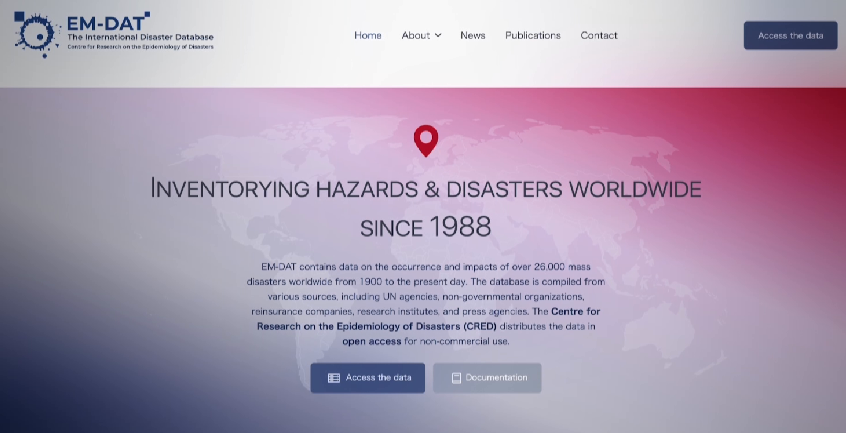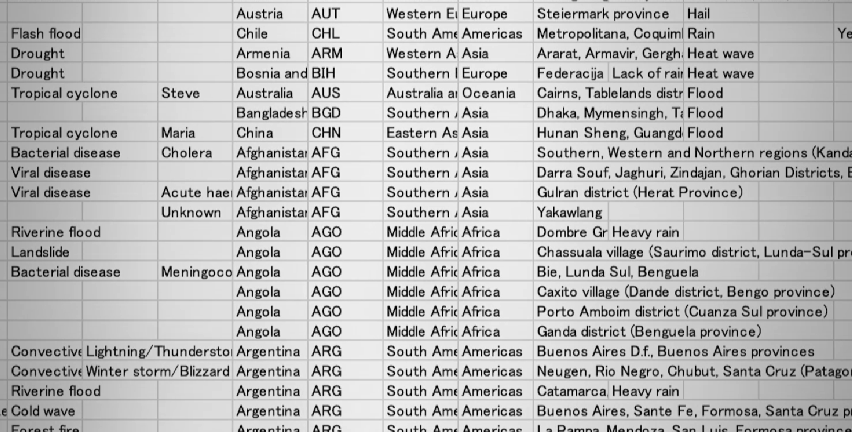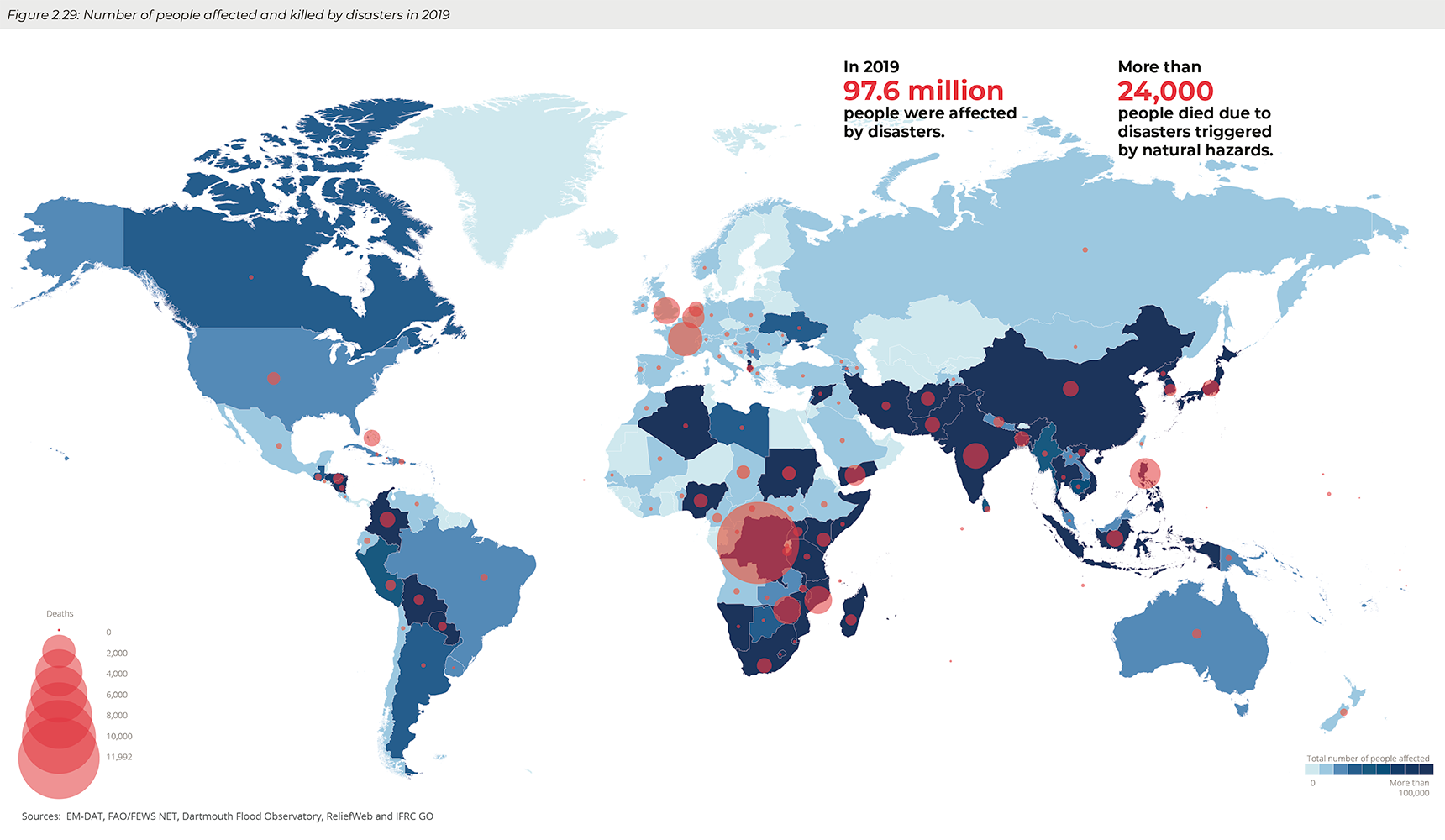EM-DAT framework
EM-DAT is a comprehensive database of major natural disasters that have occurred since 1900, currently covering 184 countries worldwide.
When a disaster occurs, the first reports arrive from major news agencies like AFP (Agence France-Presse), AP (Associated Press), and Reuters, detailing the location and nature of the event. Subsequently, information flows in from various organizations and entities, including the Red Cross, UN agencies, insurance companies, Médecins Sans Frontières (MSF), United Nations Office for the Coordination of Humanitarian Affairs (OCHA), NGOs, and civil society organizations.
These reports are scrutinized and the database is updated accordingly. Immediately following a disaster, reported figures may vary depending on the source; however, these discrepancies typically dissipate within a few weeks.

















